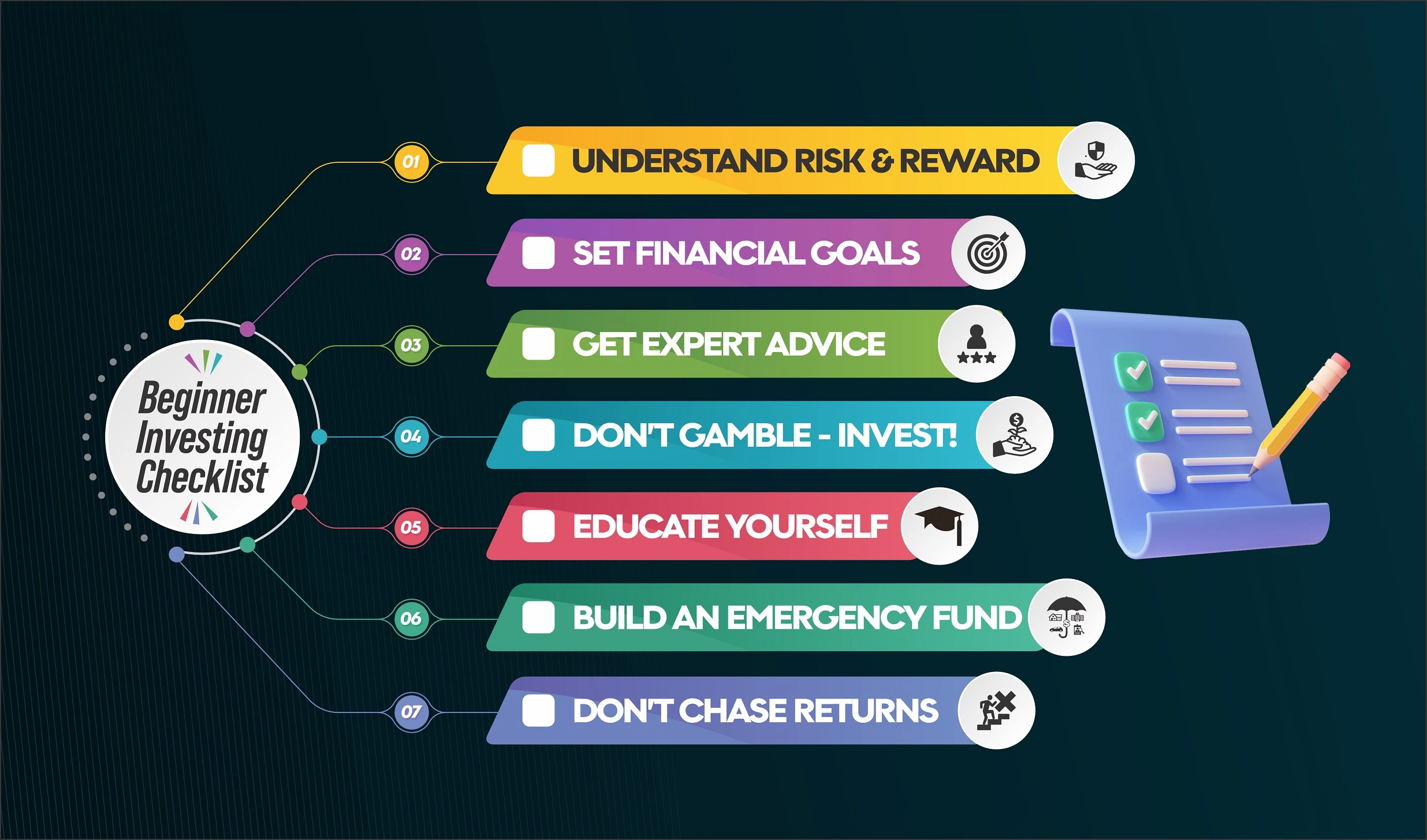
7 Proven Steps on How to Start Investing for Beginners (Easily Grow Your Wealth!): A Complete Guide
If you’ve been wondering how to start investing for beginners, you’re not alone. Investing can seem complicated and intimidating, but it doesn’t have to be. The truth is, you don’t need to be a financial expert or have a lot of money to begin building wealth through investing.
In this guide, we’ll walk you through 7 proven steps on how to start investing for beginners so you can grow your wealth, avoid common mistakes, and secure your financial future. Let’s get started!
Why Learning How to Start Investing for Beginners Matters
Understanding why you should invest is the first step in mastering how to start investing for beginners. Investing offers several benefits that can transform your financial future:
1. Build Wealth Through Compound Interest
Compound interest allows your investments to grow exponentially over time. For example, if you invest $1,000 with a 7% annual return, you’ll have $1,070 after one year. After 10 years, that amount will grow to $1,967—all thanks to the power of compounding.
👉 Learn more about compound interest (DoFollow)
2. Protect Your Money from Inflation
Inflation decreases the value of money over time. Investing in assets like stocks, real estate, and commodities helps you protect your wealth from losing value.
3. Achieve Financial Freedom and Security
Investing helps you generate passive income, allowing you to retire comfortably, travel the world, or pursue your dreams without financial stress.
7 Steps on How to Start Investing for Beginners
Step 1: Set Clear Financial Goals
The first step in learning how to start investing for beginners is to define your financial goals. Ask yourself:
- Are you saving for retirement?
- Are you looking to build an emergency fund?
- Do you want to grow wealth through passive income?
👉 Example goals:
✅ Save $100,000 for retirement in 20 years
✅ Build a $10,000 emergency fund in 5 years
Step 2: Create a Budget and Save for Investing
Before you start investing, you need capital. Create a budget to track your expenses and see where you can cut back. Use budgeting tools like Mint or YNAB to simplify the process.
👉 Read more about budgeting (DoFollow)
Step 3: Build an Emergency Fund First
One of the biggest mistakes beginners make when learning how to start investing is not having an emergency fund. Make sure you have at least 3–6 months’ worth of expenses in a high-yield savings account before you start investing.
Step 4: Choose the Right Investment Accounts
Selecting the right investment account is crucial when figuring out how to start investing for beginners. Here are your best options:
- 401(k) – Employer-sponsored account with tax advantages.
- IRA – Individual Retirement Account for long-term savings.
- Brokerage Account – A general investment account with no contribution limits.
👉 Compare investment account options (DoFollow)
Step 5: Start with Low-Cost Index Funds or ETFs
If you’re a beginner, investing in low-cost index funds or ETFs (Exchange-Traded Funds) is one of the smartest ways to grow your wealth. These funds provide broad market exposure and have low fees, making them ideal for long-term growth.
👉 Example: The S&P 500 Index Fund tracks the top 500 companies in the U.S. and has an average annual return of around 7%.
Step 6: Use Dollar-Cost Averaging to Minimize Risk
Dollar-cost averaging involves investing a fixed amount regularly (e.g., $100/month). This strategy reduces the impact of market volatility and allows you to buy more shares when prices are low and fewer when prices are high.
Step 7: Monitor and Adjust Your Portfolio
Investing is not a “set it and forget it” process. Review your portfolio annually and rebalance it if necessary to maintain your desired asset allocation.
- Increase your stock holdings if you want higher growth.
- Shift to bonds or safer assets if you’re nearing retirement.
👉 Learn more about rebalancing (DoFollow)
Common Mistakes to Avoid When Learning How to Start Investing for Beginners
Knowing what not to do is just as important as knowing what to do. Here are the most common investing mistakes beginners make:
❌ Trying to Time the Market
Timing the market is nearly impossible, even for professionals. Instead, focus on long-term growth and consistency.
❌ Investing Without a Clear Plan
Investing without a defined goal or strategy leads to poor decision-making and potential losses.
❌ Following Hype and Tips Without Research
Just because a stock is trending on social media doesn’t mean it’s a good investment. Always do your own research.
Best Investment Options for Beginners
If you’re still unsure how to start investing, here are some beginner-friendly investment options:
✅ Index Funds – Track the overall market performance.
✅ ETFs – Low-cost and easy to trade.
✅ Target-Date Funds – Automatically adjust as you approach your target retirement date.
✅ Dividend Stocks – Provide regular income in addition to capital growth.
✅ Robo-Advisors – Automatically manage and diversify your investments.
FAQs About How to Start Investing for Beginners
1. How much money do I need to start investing?
You can start investing with as little as $10 using micro-investing apps or fractional shares.
2. What’s the safest way to start investing?
Index funds, ETFs, and bonds are considered low-risk investments for beginners.
3. Can I lose all my money when investing?
While market downturns happen, diversification and long-term investing reduce the risk of losing everything.
4. Should I invest in cryptocurrency as a beginner?
Cryptocurrency is highly volatile. It’s best to limit it to 5% or less of your total portfolio.
Final Thoughts on How to Start Investing for Beginners
Learning how to start investing for beginners is easier than you might think. By setting clear goals, choosing the right investment accounts, and sticking to a smart strategy like dollar-cost averaging, you can grow your wealth and secure your financial future.
Start small, stay consistent, and don’t let market volatility discourage you. The earlier you start investing, the more time your money has to grow.
✅ Take the first step today—your future self will thank you!

